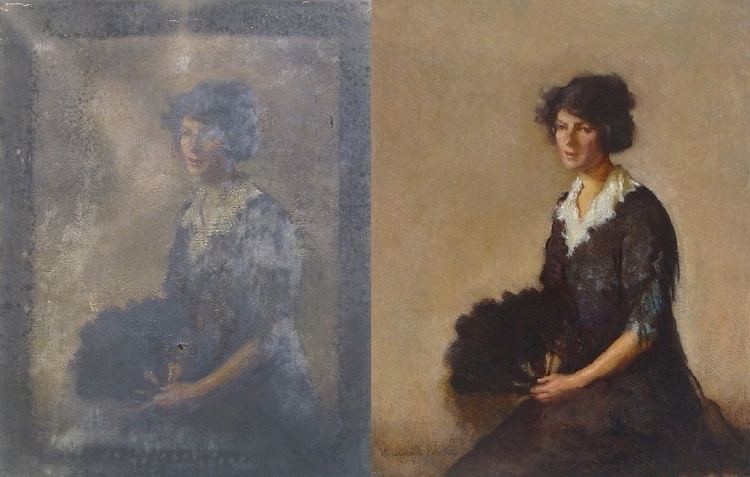 | ||
Accidental damage of art refers to damage or destruction of an artwork as a result of various types of accidents, such as natural disasters, fire, plane crash, a fall and others. Most notable damage accidents occurred during a public exhibit or transportation.
Contents
Transportation accidents
A large body of work by the German renaissance master Mathis Nithart Gothart, called Grünewald, was captured by the Swedes during the Thirty Years' War, but lost when the ships transporting war booty were sunk in the Baltic by Imperial forces.
On 2 September 1998, Swissair Flight 111 crashed near Halifax, Nova Scotia, Canada, killing 229 people. Pablo Picasso's 1963 work Le Peintre (The Painter) was part of the flight's cargo and was destroyed in the crash.
Human error
In October 2006, business magnate Steve Wynn agreed to sell the 1932 painting Le Rêve by Picasso. The painting was the centerpiece of Wynn's art collection and was displayed at his Las Vegas casino. The arranged price of $139 million would make Le Rêve the most expensive art sale of the time. The day after the price deal, while showing the painting to reporters, Wynn accidentally elbowed it, creating a significant tear. After a $90,000 repair, the painting was evaluated to be worth $85 million. Wynn claimed the price difference from his Lloyd's of London insurers, and the case was eventually settled out of court in March 2007. In March 2013, Wynn sold the repaired painting to the original buyer Steven A. Cohen for $155 million, a price approximately $5 million lower than the inflation-adjusted value ($160 million in 2013 USD) of the painting before the accident.
In 2006, a man fell after stepping on his loose shoelace at the Fitzwilliam Museum, Cambridge, England and shattered three Chinese vases of the Qing dynasty (17th century). The man was not injured and not charged with damage, but was banned from visiting the museum. The museum managed to restore the vases, which are one of its most valuable exhibits; they are back on display, but in a protective case.
On 22 January 2010, a woman accidentally fell into The Actor (L'acteur), a 1904 painting by Pablo Picasso on exhibit at the New York Metropolitan Museum of Art. The fall created a rip of about 15 centimeters (5.9 in) in height in the lower right corner of a 196 cm × 115 cm (77.25 in × 45.38 in) painting. The painting is considered one of Picasso's most important works and has an estimated value of $130 million. The damage was restored in April 2010 after three months of work. For six weeks, the painting lay flat, loaded with small silk sand bags in order to realign the mechanical stress caused by the fall. After that, a Mylar patch was placed on the back of the canvas and the front was carefully retouched. Mylar was chosen because of its transparency – the canvas contains another painting on its back. The painting was placed behind Plexiglas after the accident.
Several artworks of contemporary artist Tracey Emin were damaged by accident. Her Self Portrait: Bath (a neon light tangled in barbed wire), while exhibited in the Scottish National Gallery of Modern Art, sustained almost $2,000 worth of damage when a visitor's clothes got caught in the wire. In the same gallery, another visitor backed into her work Feeling Pregnant III. My Uncle Colin was accidentally damaged by the staff of the National Gallery of Scotland, but later repaired. In May 2004, a warehouse fire destroyed several of her works, including the embroidered tent Everyone I Have Ever Slept With 1963–95.
Negligence and diligence
In 2000, porters at Sotheby's auction house in London disposed of a box using a crushing machine. They were apparently unaware that the box was not empty but contained a painting by Lucian Freud worth about $157,000.
Some contemporary exhibits were damaged as a result of diligence of museum staff who tried to clean up the museum area of what they perceived as a foreign or unclean object:
Fire
In 1654, a gunpowder explosion in Delft destroyed the studio of Dutch artist Carel Fabritius along with most of his paintings. The artist himself died in the explosion.
On 26 September 1687, the Parthenon and its sculptures were severely damaged by the explosion of an Ottoman Empire ammunition dump stored inside the building, which was ignited by Venetian bombardment.
In May 2004, a fire destroyed the Momart warehouse in east London, together with more than 50 paintings by abstract artist Patrick Heron, as well as the works of nineteen other artists.
